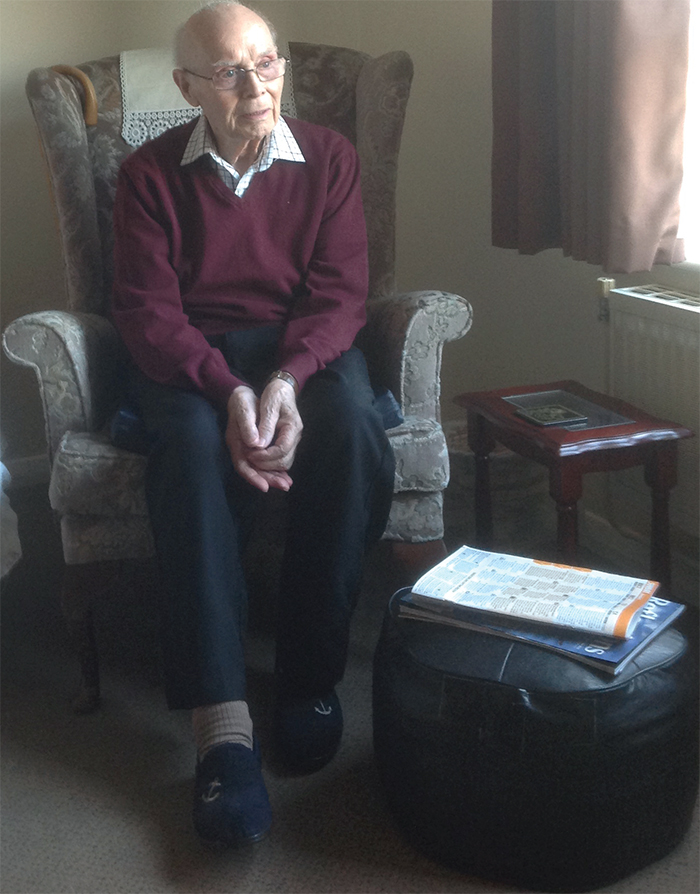Caring for the care homes
In Analysis
Follow this topic
Bookmark
Record learning outcomes
 The Royal Pharmaceutical Society has called for pharmacists to be better utilised by care homes, saying it could make a huge difference to the quality of life of residents as well as the wider NHS.
The Royal Pharmaceutical Society has called for pharmacists to be better utilised by care homes, saying it could make a huge difference to the quality of life of residents as well as the wider NHS.
One pharmacist, one care home. That was the main recommendation made in a vision document published by the RPS in February. 'The Right Medicine: Improving Care in Care Homes' says that something has to change in the places where nearly half a million of the oldest people in our society live. The document champions pharmacists as being able to make the difference.
The RPS is not wrong in drawing attention to the issue. Research over recent years has shown that older people are simply not getting the care they require as they approach the end of their lives. The average number of medicines prescribed to care home residents is 7.2, but not all of this is warranted. An audit found that over a quarter of those on antipsychotics didn't need them and, in nearly six in 10 cases, the risks of such drugs were considered to outweigh the potential benefits.
Given that polypharmacy has long been linked to an increased risk of falls, it is perhaps unsurprising that many people living in care homes suffer such incidents. Alarmingly, the figure has been put at 50 per cent of residents falling each year. Another paper has found that 35 per cent of falls result in serious injury, with 8 per cent causing a fracture.
The bad news doesn't stop there. Take those who have gone into hospital as the result of a fall while in a home. Only one in 10 is discharged on the same medicines they were taking on admission. The risk of an adverse drug event has been estimated as 4.4 per cent for every drug alteration or change.
And even when back in residential care, these patients are not receiving the level of support they need, with a report showing that around 50 per cent of communication errors around medicines management occur directly between the home and community pharmacy.
Case study: Northumbria's Shine project
In 2012, Northumbria Healthcare NHS Foundation Trust secured funding from the independent charity, The Health Foundation, to undertake a project involving older patients living in care homes. The aims of the Shine initiative were to reduce the amount of medicines prescribed to residents unnecessarily, and to involve patients and their families or carers in decisions about prescribing and de-prescribing.
Wasim Baqir, research and development pharmacist at the trust, says a pragmatic approach was adopted by getting a pharmacist to ask four questions:
- Is the medicine a patient is on currently performing a function?
- Is it still appropriate given the patient's overall health?
- Is it safe?
- Is there anything missing that the patient should be taking?
The answers to these questions were then taken to a multi-disciplinary team for discussion, and then the recommendations discussed with the patient and their family, carers or advocates.
€We aimed to reduce risks to the patient, improve quality of life and reduce costs,€ says Dr Baqir. Twenty care homes were involved in the project, with 422 residents receiving 1,346 interventions €“ most of which involved stopping a medicine because the patient either didn't want or need it. The net savings were substantial: £184 per person reviewed, which means that for every £1 spent on the service, £2.38 could be released from the medicines budget. Dr Baqir says that this last figure would be higher €“ £3.53 is his estimate €“ if pharmacist prescribers undertook the reviews.
The benefits were not just financial, adds Dr Baqir: €Care home staff had more time for their patients, as we worked out that the changes saved an average of 6.6 hours on the drugs round per home per week. And patients were more compliant with the medicines that they were on because they had been involved in the decision-making process.€
Since then, the project has been picked up by NHS England's Vanguard programme, which is helping to pioneer new models of care for the NHS, and as a result is being extended across the whole county to some 3,000 older people in care homes and other settings. Dr Baqir wants to encourage other areas to do the same. €There is no 'one glove fits all' approach to this kind of work, but we hope that people will take the principles we have developed and apply them where they can and where they are needed, whether that is in residential care settings or the homes of older people.€
More information on the initiative can be viewed at The Health Foundation: Pills.
Change needed
 Clearly, problems beset many stages of a patient's journey through primary, secondary and residential care, but one of the chief culprits is that so many individuals and organisations are involved. This, in turn, means that all too often no one person is responsible for the care of some of the most vulnerable individuals in the healthcare system. This, the RPS states, could be addressed by making one pharmacist, as part of a multidisciplinary team, responsible for all arrangements regarding medicines and their use within a care home.
Clearly, problems beset many stages of a patient's journey through primary, secondary and residential care, but one of the chief culprits is that so many individuals and organisations are involved. This, in turn, means that all too often no one person is responsible for the care of some of the most vulnerable individuals in the healthcare system. This, the RPS states, could be addressed by making one pharmacist, as part of a multidisciplinary team, responsible for all arrangements regarding medicines and their use within a care home.
Services provided by this pharmacist would include conducting an individual risk assessment when someone moves to a care home, to establish whether they are able to manage their own medicines and undertaking medicines reconciliation at the same stage, says the RPS. Once a year, or whenever a drug is started, stopped or changed, or a resident moves care setting, the pharmacist would review all the patient's medication, and also conduct a falls assessment upon admission and at regular intervals. As a result of all these interventions, medication regimens would be rationalised, meaning adverse reactions and thus falls and hospital admissions would be substantially reduced.
Alongside this, the RPS believes that €“ with patient consent €“ pharmacists working in such a capacity should have full read and write access to health records. This, in addition to being a regular presence at the care home they are attached to, and an increased involvement in end-of-life and anticipatory medicines decisions, would promote higher quality, safer and more effective patient care, and provide support to care home staff, says the RPS.
It is worth noting that the paper's recommendations are in line with those made in guidance on the topic published by NICE in 2014.
Case study: Care home improvement in Hertfordshire
The area covered by East and North Herts CCG includes 92 care homes with some 3,200 beds in total. Given that the accident and emergency attendance rate among this population is 0.96 per 100 versus 0.34 per 100 people in the general over-65s population, the CCG and local authority recognised the need to deliver an integrated and better model of health and social care and achieved Vanguard status with NHS England to do just that.
As part of the project, four pharmacists have been recruited to undertake medication reviews, starting with the biggest €“ 120-150 bed €“ settings. These professionals have access to patient records and care plans, and link up with GP surgeries, community pharmacies and care home staff to provide medicines management support.
Since the initiative was launched last October, 145 patients in eight homes have gone through the process, with 1,447 medicines stopped and 208 drugs, such as bone protection agents, added. The CCG's associate director of medicines optimisation, Pauline Walton, and lead pharmacist Maxine Davis say that this equates to a £18,295 reduction in annualised direct drug costs, or £126 per patient reviewed.
Although the project is in its infancy, it is already evolving. Davis and Walton say that they want to extend the service to more residential homes, so need to recruit at least one pharmacy technician plus more pharmacists, preferably with prescribing qualifications. Increased access to dietetic support and diagnostics, plus the ability to issue support materials, would also enable expansion of the scheme, ideally into the homes of those who are still living independently but who are considered to be vulnerable.
Details of the project can be accessed here.
Wider benefits
Increased pharmacist involvement in care homes would have other benefits, says the RPS, such as helping to solve the issue of medicines waste. This, combined with the savings incurred as a result of a decrease in hospital admissions in this population, would pay for the service, the Society adds.

More use of pharmacists in care homes would optimise drug regimens
Such a vision, however, is not straightforward to put into practice. Enablers identified by the RPS include:
- Making one GP practice responsible for one care home
- Establishing a blueprint for commissioners about what good pharmaceutical care in residential homes looks like
- Drawing up a standard contract for use between homes or CCGs and pharmacists providing such services
- Putting in place better IT systems to improve the flow of information across both independent and NHS health and social care providers.
The Royal Pharmaceutical Society document can be found here. Views and comments on any areas that have been overlooked or how the work described can be taken forward should be sent to heidi.wright@rpharms.com.
